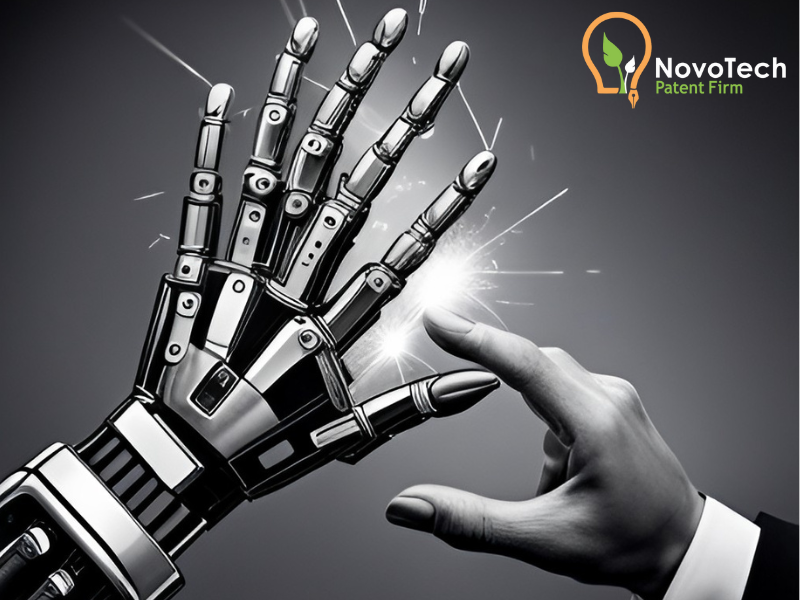
In the World of AI-assisted Innovation, the Human Touch Remains Paramount
By Babak Akhlaghi on February 17, 2024.
On October 30, 2023, an Executive Order by President Biden mandated the USPTO to, within 120 days, publish comprehensive guidance for both patent examiners and applicants on the subject of inventorship and the use of AI, including generative AI, in the inventive process. In response, this week, the USPTO released such guidance. We will see a similar guidance later this year on patent eligibility (101) under the same directive.
The guidance, which went into effect on February 13, 2024, affirms that AI-assisted inventions are eligible for patent protection as long as a human made a “significant contribution” to the claimed invention. To this end, the guidance draws upon existing case laws, Thaler v. Vidal, 43 F.4th 1207, 1213 (Fed. Cir. 2022), cert denied, 143 S. Ct. 1783 (2023) and Pannu v. Iolab Corp., 155 F.3d 1344 (Fed. Cir. 1998). Specifically, the patent application must only name a natural person as an inventor under the Thaler ruling and that person must have made a “significant contribution” to the claimed invention as outlined in Pannu ruling.
Under the “significant contribution” test outlined in Pannu ruling, a person is considered to be a joint inventor if the person (1) contributed in some significant manner to the conception of the invention; (2) made a contribution to the claimed invention that is not insignificant in quality, when that contribution is measured against the dimension of the full invention; and (3) did more than merely explain to the real inventors well-known concepts and/or the current state of the art.
Recognizing the complexity in assessing whether a human’s contribution to AI-assisted inventions is significant, and that there is no bright-line rule, the USPTO provides these non-exhaustive principles for guidance:
1. A natural person’s use of an AI system in creating an AI-assisted invention does not negate the person’s contributions as an inventor. That person can be listed as an inventor if they made a significant contribution to the invention.
2. Simply identifying a problem and submitting it to an AI system for a solution does not amount to a “significant contribution” to the invention. A significant contribution, however, can be demonstrated through the careful crafting of a specific prompt to elicit a particular solution from the AI system.
3. A person who designs, builds, or trains an AI system in view of a specific problem to elicit a particular solution could be considered to have provided a significant contribution to the invention created with the AI system.
4. A person who takes the output of an AI system and makes a significant contribution to the output to create an invention may be a proper inventor.
5. Simply owning an AI system that generates an invention does not automatically qualify the owner as an inventor. See above, principle 1.
Key Takeaways
1. For an AI-assisted invention, it is important that at least one natural person must have conceived each of the claims.
2. Simply identifying a problem and presenting it to an AI system isn’t enough for inventorship. However, crafting a specific prompt that guides the AI system towards a solution can be considered a significant contribution. See, Guidance, Example 1, Scenario 1.
3. Inventorship is a claim-by-claim determination. Professor Dennis Crouch raises an interesting question in his recent article on Patently-O : What happens when independent claim 1 is conceived by a human, but dependent claim 2 is conceived by an AI? Should we exclude dependent claim 2 from the application, or can we argue that the human inventor has significantly contributed to claim 2 due to its dependency on claim 1? In my opinion, the probable answer is that the human inventor could be linked with both claims. To arrive at this conclusion, I would reframe claim 2 as an independent claim and examine it in light of the Pannu ruling. After considering each element of the Pannu ruling, the answer is likely to be affirmative unless the addition of invention from dependent claim 2 to claim 1 is so significant that overshadows all the contributions made in claim 1.